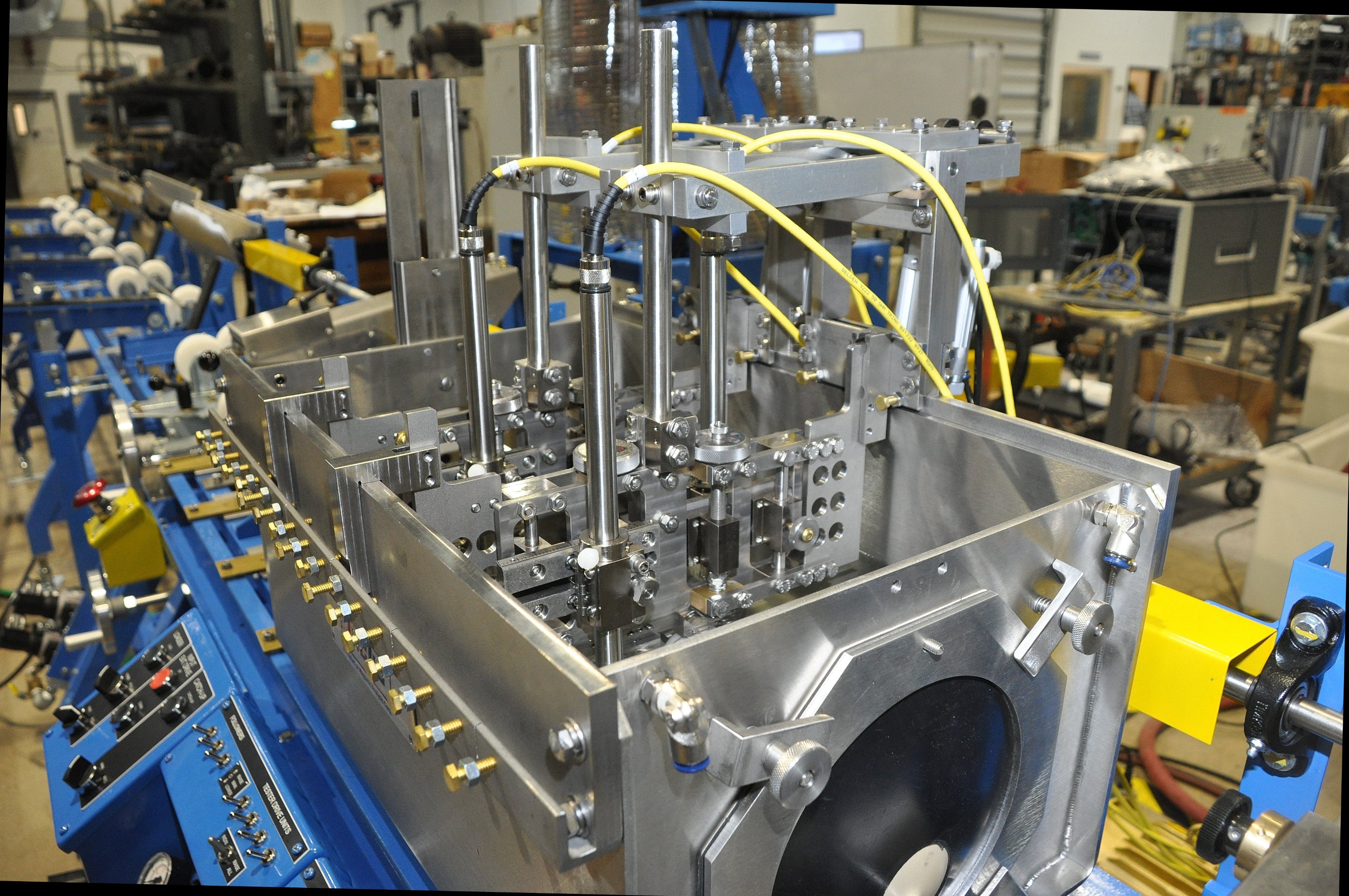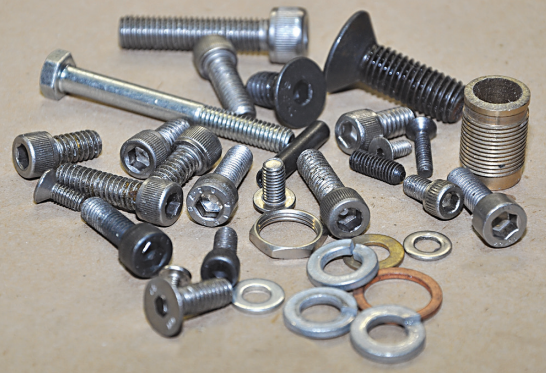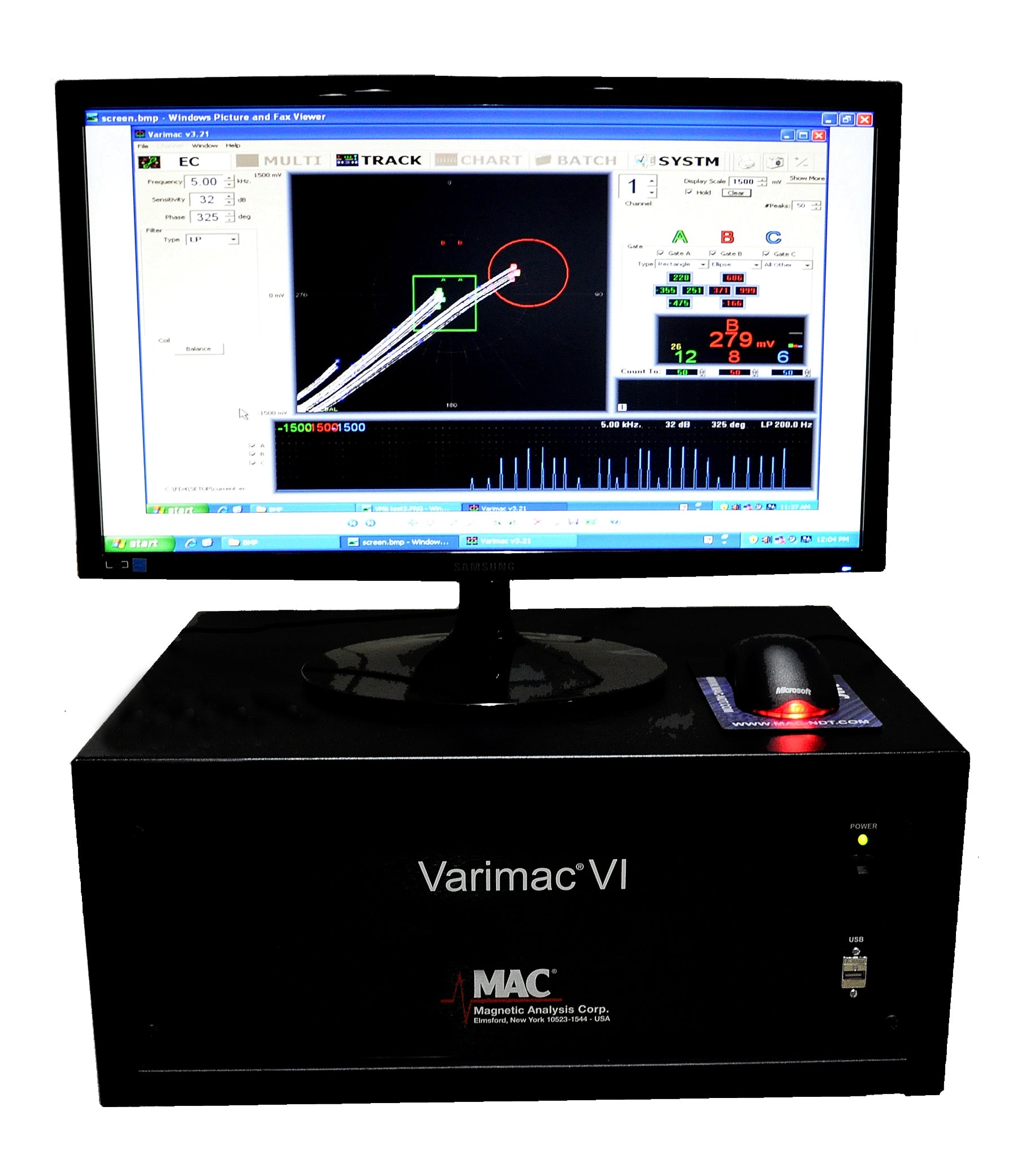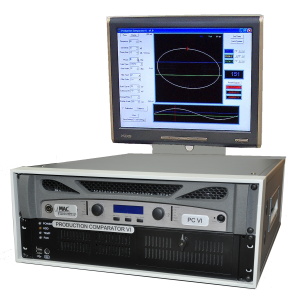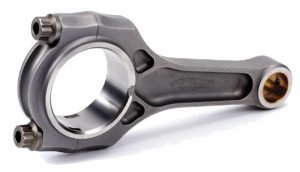As a special service to our customers, a material sample can be sent to our trained staff of experts for a no-charge trial and report. For complete details, call or email MAC®.
- Phase (a change in the time relation to the output voltage). Dimensional changes in non-ferrous materials will usually produce a phase change.
- Harmonic Distortion (occurs when high power is used on ferrous material to nearly saturate the part). Harmonic Distortion is an excellent way to indicate difference in care hardness in ferrous material.
- For example, variations in hardness or heat treatment create a change in permeability. Changes in alloy affect conductivity. Significant dimensional changes affect both conductivity and permeability. These changes in the coil result in screen signals that can be selected based on differences in amplitudes, phase angles or harmonic distortions.

- Comparators can operate with either one coil (absolute method) or two coils (differential method). Generally, the use of the two-coil system provides greater sensitivity.
- Coils can be encircling or probe type.
- The frequency of the excitation voltage determines what type of differences will be seen between two parts. Therefore, a comparator that operates on more than one frequency, or has a variable frequency through a given range, has more selectivity.
- Filtering capabilities in electromagnetic comparators allow for an examination of the specific frequency which is most affected by the material being inspected, while ignoring the effects of other frequencies.
- An elimination filter can also be used to minimize the effect of a given frequency so that other frequencies can be examined.



